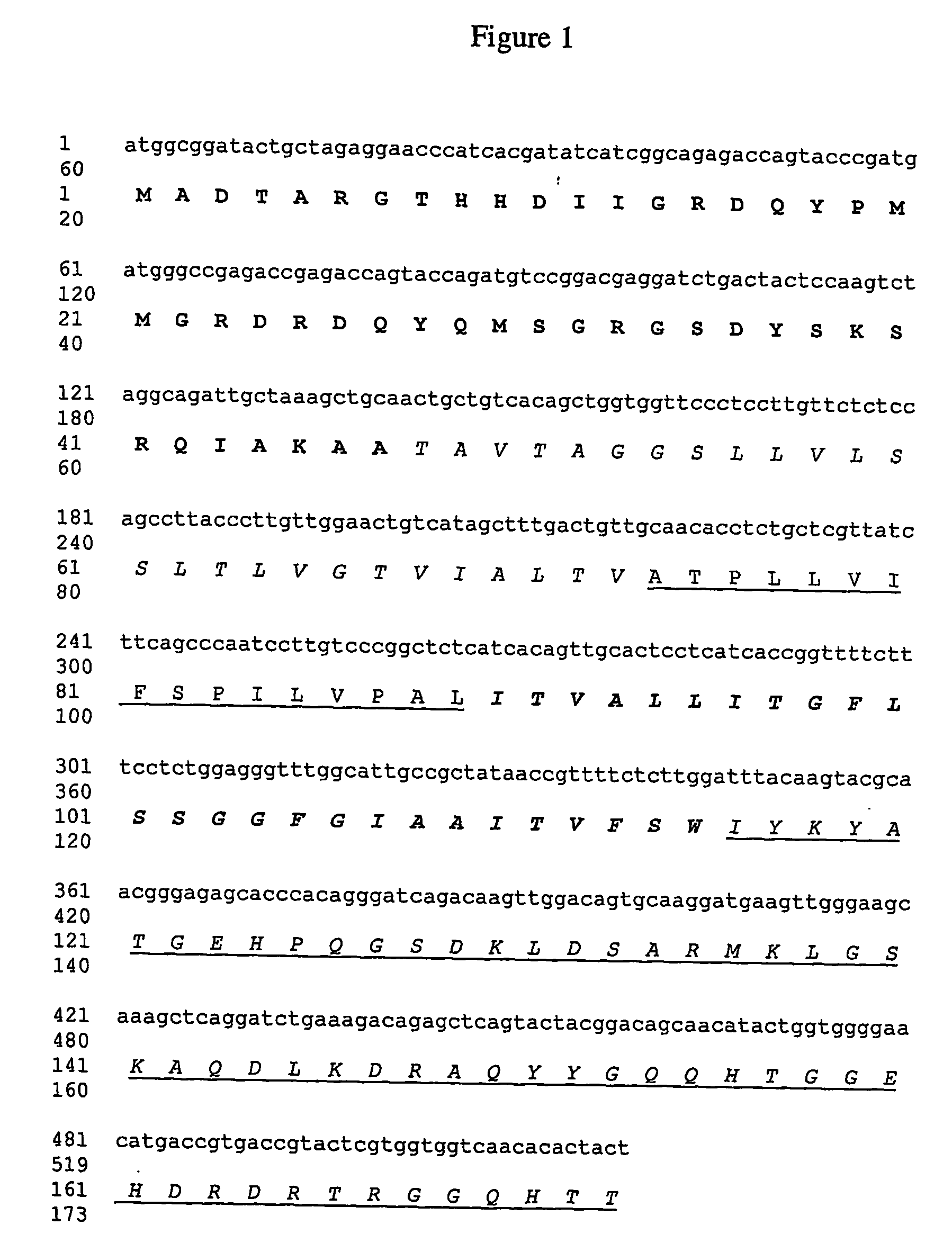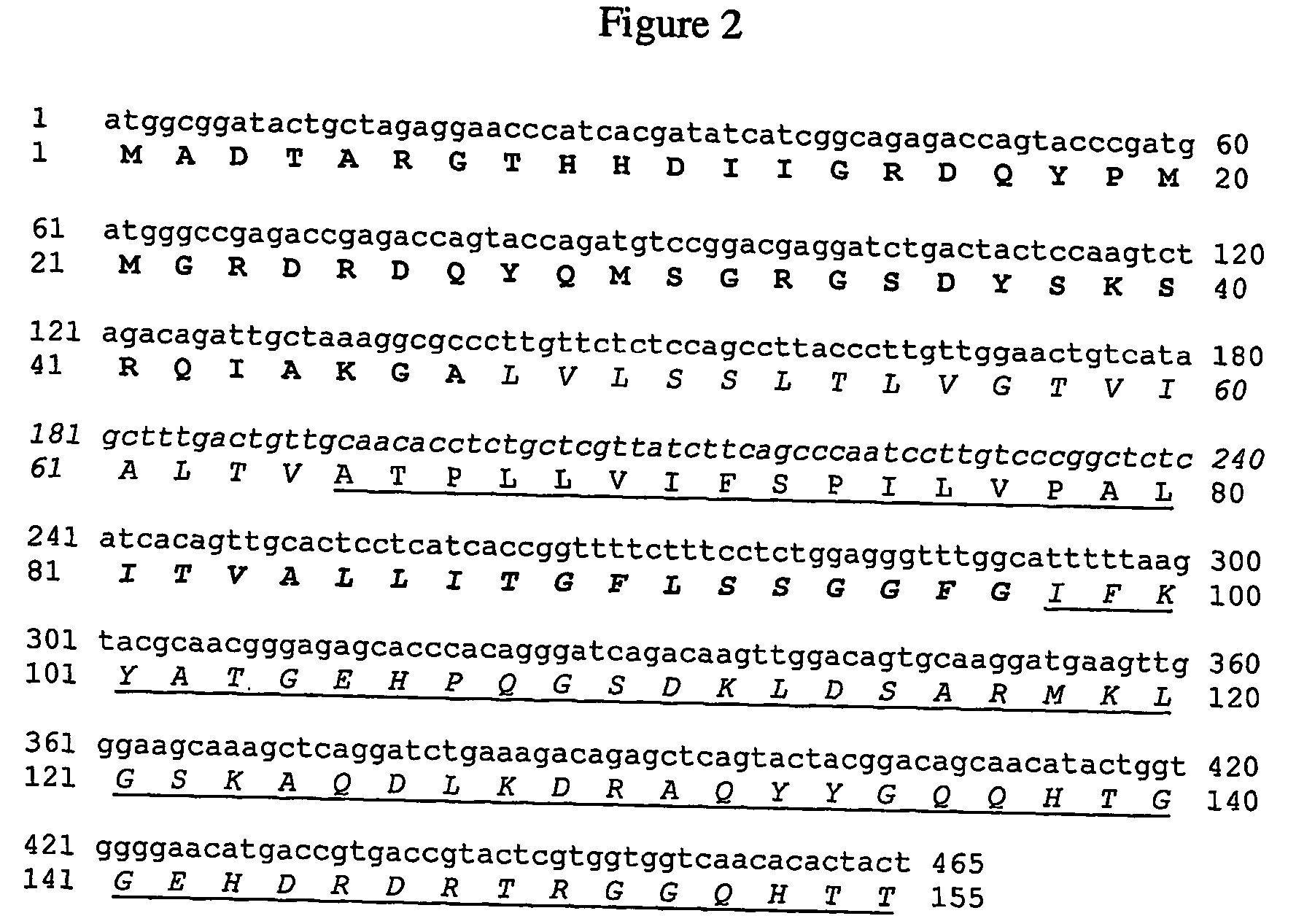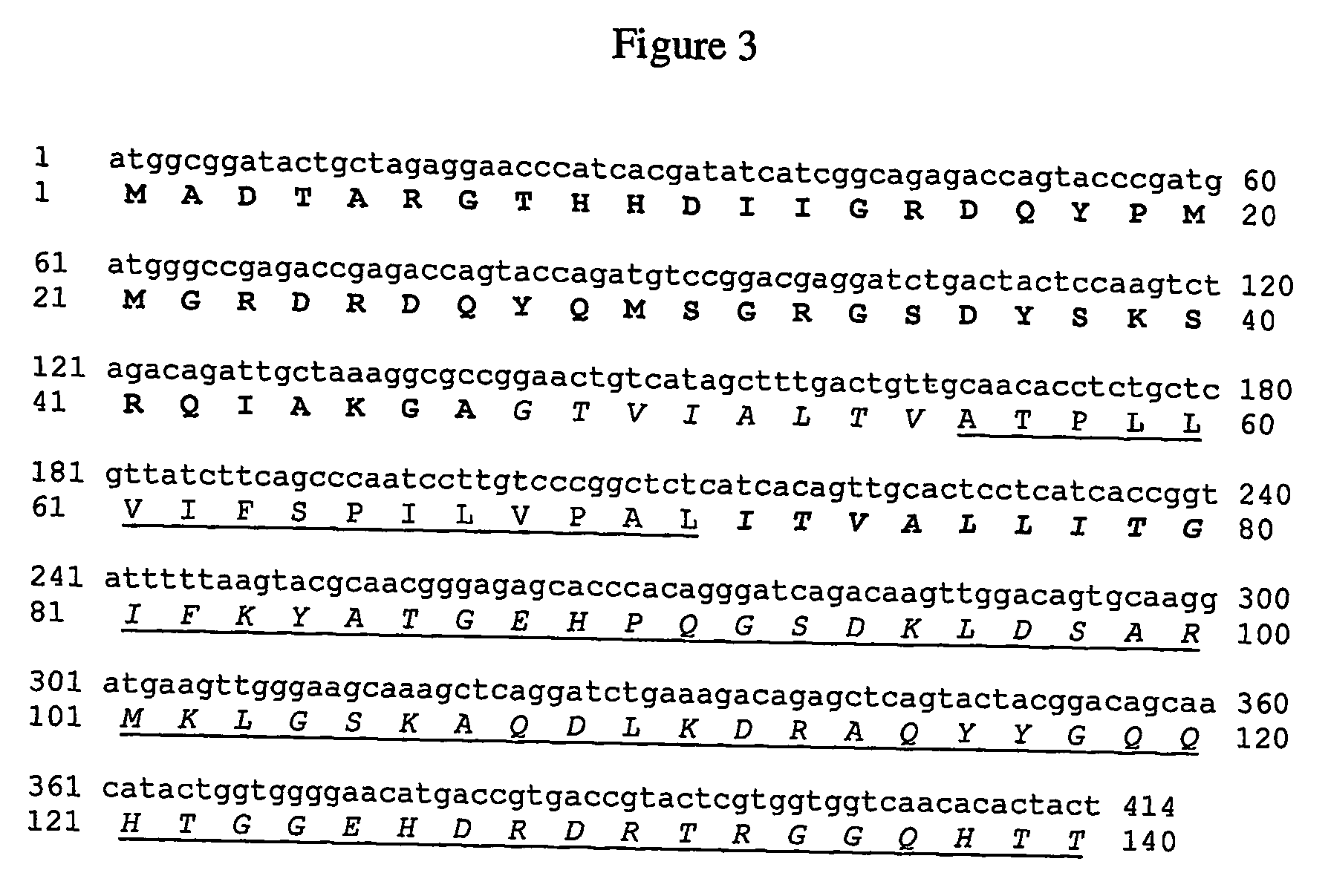Modified oleosins
- Summary
- Abstract
- Description
- Claims
- Application Information
AI Technical Summary
Benefits of technology
Problems solved by technology
Method used
Image
Examples
example 1
Reduction of the Hydrophobic Domain in Regions Flanking N- and C-Terminal Domains.
[0132] The hydrophobic domain from Oleo-FL can be reduced in the regions flanking the N- and C-terminal domain as described in FIG. 8c (reduction in “Direction 1”).
[0133] Construction of OleoH23P
[0134] The fragment coding for the N-terminal domain (FrNT) is amplified using the forward primer NTD2 (5′-TATTCTCGAGCCATGGCGGATACTGCTAGAGG-3′)—SEQ ID NO:45 containing XhoI and NcoI restriction sites (underlined) and the reverse primer NTR (5′-CAGTGGCGCCTTTAGCAATCTGTCTAGAC-3′)—SEQ ID NO:46 containing the NarI restriction site (underlined) using Oleo-FL cDNA as template. The fragment FrH23P is amplified using the forward primer HN2D (5′-CAGCTGGTGGTGGCGCCTTGTTCTCTCC-3′)—SEQ ID NO:47 containing NarI restriction site (underlined) and the reverse primer HC2R (5′-TTATATTAAAAATGCCAAACCCTCCAG-3′)—SEQ ID NO:48 containing the MseI restriction site (underlined) using Oleo-FL cDNA as template. (FIG. 9b).
[0135] These P...
example 2
Reduction of the Hydrophobic Domain in Regions Flanking the Proline Knot Motif.
[0151] The hydrophobic domain from Oleo-FL can be reduced in the regions flanking the N- and C-terminal domain as described in FIG. 8c (Reduction in “direction 2”).
[0152] Construction of OleoH12P
[0153] The fragment coding for the N-terminal domain plus regions I and II of the hydrophobic chain HN (FrNTH12) is amplified using the forward primer NTD2 (5′-TATTCTCGAGCCATGGCGGATACTGCTAGAGG-3′)—SEQ ID NO:45 containing XhoI and NcoI restriction sites (underlined) and the reverse primer HN2R (5′-ATAGGAGTCGCAACAAGGGTAAGGCTGGAGAG-3′)—SEQ ID NO:55 containing the HinfI restriction site (underlined) using Oleo-FL cDNA as template. The fragment coding for the proline knot motif (PKM) is amplified using the forward primer PKMD-Hinf (5′-TTGTGACTCCTCTTCTCGTTATCTTCAGCCCA-3′)—SEQ ID NO:56 containing HinfI restriction site (underlined) and the reverse primer PKMR-Sau96I (5′-ATGAGGGCCGGGACAAGGATTGGACTGAAGATAA-3′)—SEQ ID N...
example 3
Enlargement of the Hydrophobic Domain.
[0164] Construction of Oleodouble
[0165] The hydrophobic domain from Oleo-FL can be extended. The fragment coding for the N-terminal domain (FrNT) is amplified using the forward primer NTD2 (5′-TATTCTCGAGCCATGGCGGATACTGCTAGAGG-3′)—SEQ ID NO:45 containing XhoI and NcoI restriction sites (underlined) and the reverse primer NTR (5′-CAGTGGCGCCTTTAGCAATCTGTCTAGAC-3′)—SEQ ID NO:46 containing the NarI restriction site (underlined) using Oleo-FL cDNA as template. The fragment coding for the extension of the HN hydrophobic chain (FrHNext) is amplified using the forward primer HN1D (5′-CTAAAGGCGCCACTGCTGTCACTGCTG-3′)—SEQ ID NO:61 containing NarI restriction site (underlined) and the reverse primer DoubleNR (5′-AGAGGAGTCACAACAGTCAAAGCTATCACAG-3′)—SEQ ID NO:62 containing the HinfI restriction site (underlined) using Oleo-FL cDNA as template (FIG. 11b).
[0166] The PCR fragments are purified and digested with the enzyme NarI creating cohesive ending in the ...
PUM
| Property | Measurement | Unit |
|---|---|---|
| Nucleic acid sequence | aaaaa | aaaaa |
| Hydrophobicity | aaaaa | aaaaa |
Abstract
Description
Claims
Application Information
 Login to View More
Login to View More - R&D
- Intellectual Property
- Life Sciences
- Materials
- Tech Scout
- Unparalleled Data Quality
- Higher Quality Content
- 60% Fewer Hallucinations
Browse by: Latest US Patents, China's latest patents, Technical Efficacy Thesaurus, Application Domain, Technology Topic, Popular Technical Reports.
© 2025 PatSnap. All rights reserved.Legal|Privacy policy|Modern Slavery Act Transparency Statement|Sitemap|About US| Contact US: help@patsnap.com



